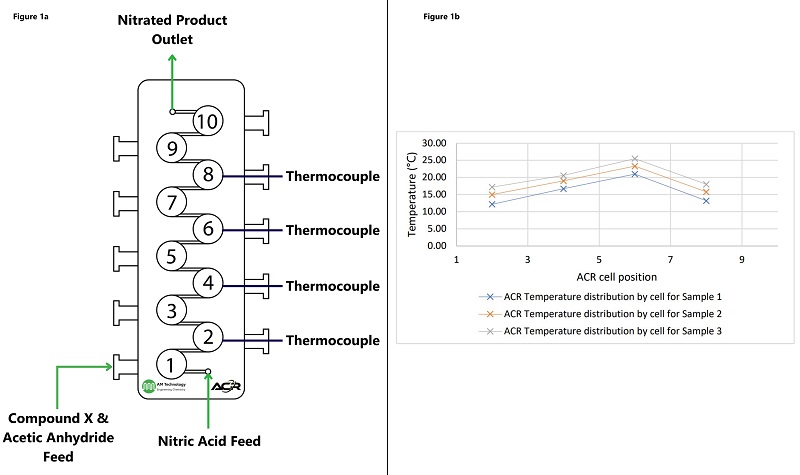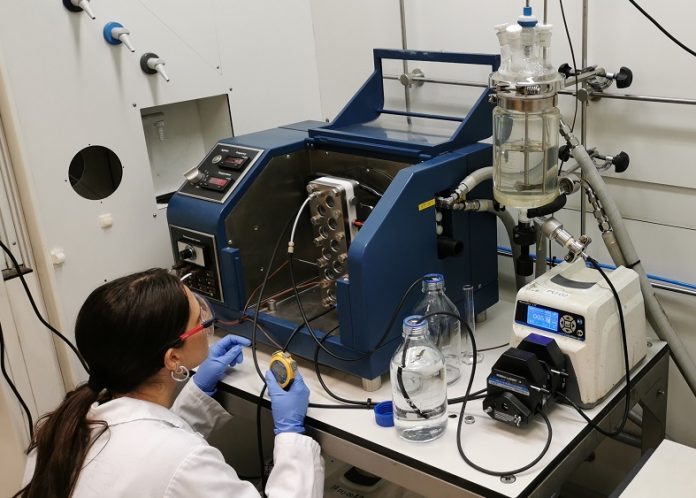One of the major challenges faced by chemists and chemical engineers arises when there is a need to scale up from the lab bench to pilot-plant or production scale. Many reactions are exothermic – meaning that they generate heat, and this heat generation must be carefully controlled to prevent potentially hazardous thermal runaways. Thermal runaways begin when the heat produced by the reaction exceeds the heat removed. The surplus heat raises the temperature of the reaction mass, which causes the rate of reaction to increase. This in turn further accelerates the rate of heat production.
A recent feasibility test performed at AM Technology involved translating a batch nitration into flow with the Coflore ACR for a client. Typically, dropwise addition of reagent is required in batch processes involving exotherms, such as nitrations, to minimise the chance of thermal runaway. At production scale, dropwise addition steps are extremely time-inefficient, often taking several hours. Whilst specific details of the reaction can not be shared, calorimetric data showed the enthalpy of reaction to be around -3250 J/g. Reports in the literature state that preparation of the nitrated product via batch methods takes 6-12 hours with dropwise addition accounting for 3 hours, and at temperatures up to 80°C.
A key advantage of Coflore flow reactors is their greatly improved heat-transfer coefficient compared to batch reactors,* meaning that exothermic reactions can be performed much more efficiently by avoiding the need for time-limiting dropwise addition steps. For this study, the Coflore ACR was set up as shown in Figure 1a, with continuous feed of both the nitrating agent and compound “X” into cell 1. Thermocouples were positioned at cells 2, 4, 6 and 8 to allow AMT engineers to monitor the reaction temperature over time, and therefore track the reaction exotherm, for residence times between 2 and 4 minutes.

The Coflore ACR was successfully able to control the heat evolution of the nitration reaction at all residence times tested. For the 2-minute residence time run, the steady-state temperature values across the ACR reactor cell block are shown in Figure 1b. As can be seen in the graph, for all three 2-minute residence time runs performed, the temperature of the reaction was highest in cell 6, before returning to pre-addition levels by cell 8. For this testing, ACR temperature control was performed with a Huber Unistat 360 and high-shear agitators were used to give a working reactor volume of 90 mL.
The versatility of the ACR allows the user to place up to 10x thermocouples (one per cell) into the reactor cell block, making it an excellent reactor to monitor exotherms. The reactor block side ports can also be used to feed in additional reagents, or split feed in a single reagent at multiple points across the reactor block – another way to tackle both exothermic reactions and consecutive reactions.
For further information on the Coflore flow reactors please visit www.amt.uk or email info@amt.uk.
*As summarised in technical note “AMT TN-05” here.









